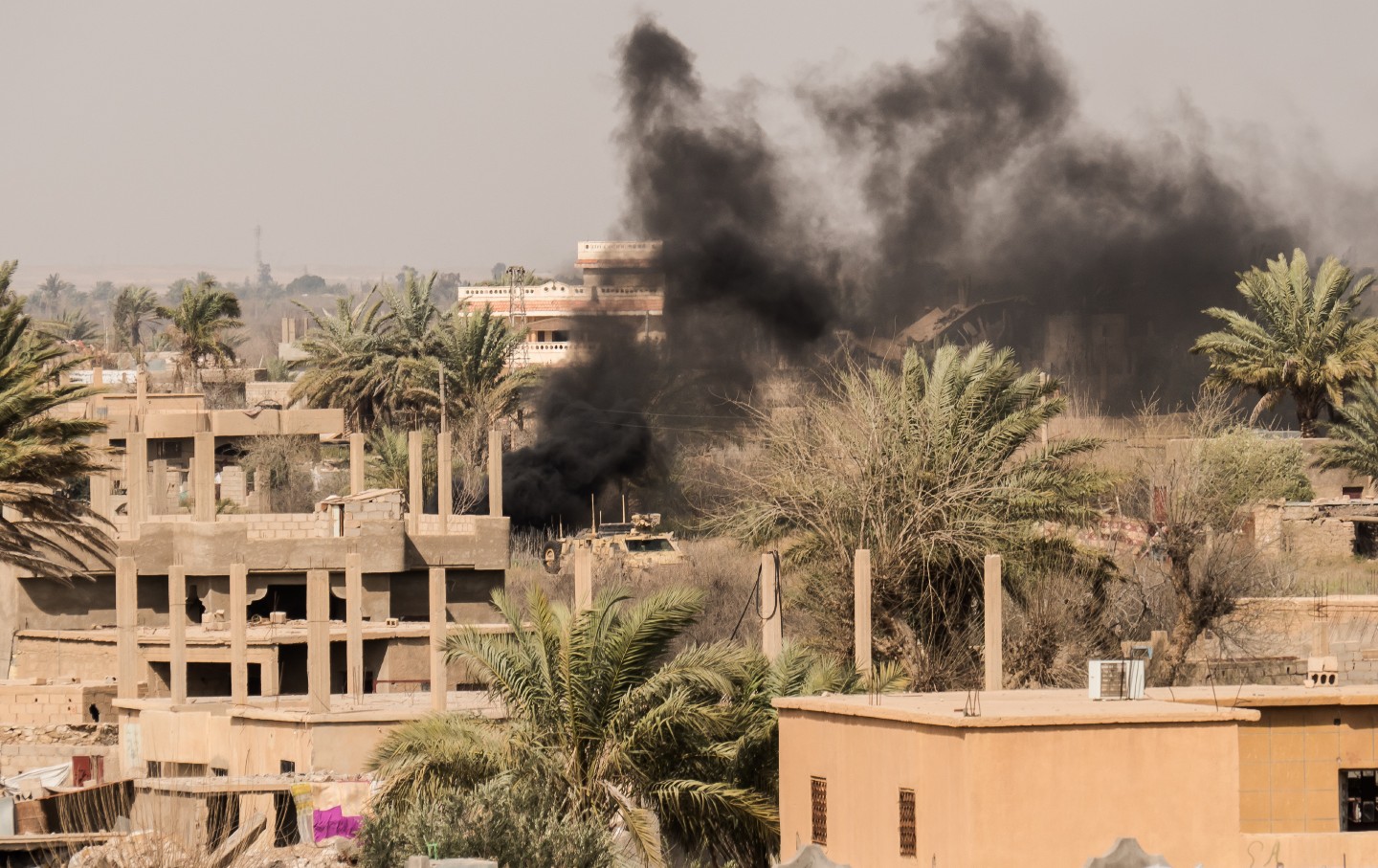
Smoke after the shelling of Islamic State’s last holdout of Baghouz.(Getty)
Like a lot of journalists, I’ve long had a love/hate relationship with The New York Times. The paper’s enormous reach and influence, and the powerful lens it can train on people and events, so often seem wasted on the trivial and the transitory. Then there’s its longstanding role as cheerleader in chief for gentrification—not just in New York City, where the Times has been on the wrong side of nearly every fight dating back to the days of Robert Moses, but nationwide. There is nothing the Times likes better than a “rising housing prices” story—even if it has to go to Texas to find it.
Although I’ve written for it—even, for a few years, worked for it—the Times has always seemed to me the embodiment of the mainstream media: self-important, politically cautious, primed to apologize for the status quo. Yet precisely because of its outsize role in setting the media agenda, when the paper of record deigns to take notice, the rest of us have to pay attention. And when its reporting brings to light a war crime that, without the spotlight of its coverage, would likely have remained successfully covered up, The New York Times deserves our gratitude.
The November 13 front page story promised to reveal “How the U.S. Hid an Airstrike That Killed Dozens of Civilians in Syria.” Reporters Dave Phillips and Eric Schmitt and the paper’s Visual Investigations Team redeemed that promise handsomely, combing through videos, satellite images, and still photographs of the airstrike to reconstruct what happened in March 2019: A US F-15E attack plane dropped a 500-pound bomb on what an American military analyst, watching the attack in real time via drone, described as “50 women and children” near the Syrian town of Baghuz—and then went back and dropped two 2,000-pound bombs on the survivors.
As with most war crimes, exposing this atrocity required several serving members of the military to speak out, initially to their superiors and eventually to the Senate Armed Services Committee. Only when it became clear that military authorities were determined that the evidence should literally remain buried—US-led coalition forces bulldozed the blast site within days of the attack, and the lead investigator researching the incident for the Pentagon Inspector General’s Office was forced out of his job after he refused to remain silent—did the story reach the Times.
But when it did, the paper threw all its formidable resources into making sure the truth emerged, with unflinching and unimpeachable reporting. For that, everyone involved deserves our thanks.
D.D. GuttenplanTwitterD.D. Guttenplan is editor of The Nation.